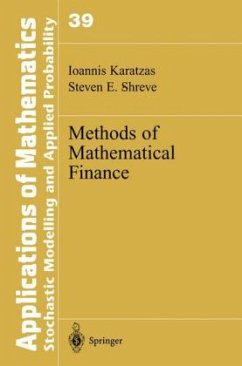This sequel to Brownian Motion and Stochastic Calculus by the same authors develops contingent claim pricing and optimal consumption/investment in both complete and incomplete markets, within the context of Brownian-motion-driven asset prices. The latter topic is extended to a study of equilibrium, providing conditions for existence and uniqueness of market prices which support trading by several heterogeneous agents. Although much of the incomplete-market material is available in research papers, these topics are treated for the first time in a unified manner. The book contains an extensive set of references and notes describing the field, including topics not treated in the book. This book will be of interest to researchers wishing to see advanced mathematics applied to finance. The material on optimal consumption and investment, leading to equilibrium, is addressed to the theoretical finance community. The chapters on contingent claim valuation present techniques of practical importance, especially for pricing exotic options. Written by two of the best-known researchers in mathematical finance, this book presents techniques of practical importance as well as advanced methods for research. Contingent claim pricing and optimal consumption/investment in both complete and incomplete markets are discussed, as well as Brownian motion in financial markets and constrained consumption and investment. This book treats these topics in a unified manner and is of practical importance to practitioners in mathematical finance, especially for pricing exotic options.
"The book under review deals with the applications of stochastic analysis and optimal control theory to various problems arising in modern mathematical finance. In contrast to several other books on mathematical finance which appeared in recent years, this book deals not only with the so-called partial equilibrium approach (i.e., the arbitrage pricing of European and American contingent claims) but also with the general equilibrium approach (i.e., with the equilibrium specification of prices of primary assets). A major part of the book is devoted to solving valuation and portfolio optimization problems under market imperfections, such as market incompleteness and portfolio constraints. ... Undoubtedly, the book constitutes a valuable research-level text which should be consulted by anyone interested in the area. Unlike other currently available monographs, it provides an exhaustive and up-to-date treatment of portfolio optimization and valuation problems under constraints. It is also quite suitable as a textbook for an advanced course on mathematical finance." (Marek RutKowski, Mathematical Reviews)

